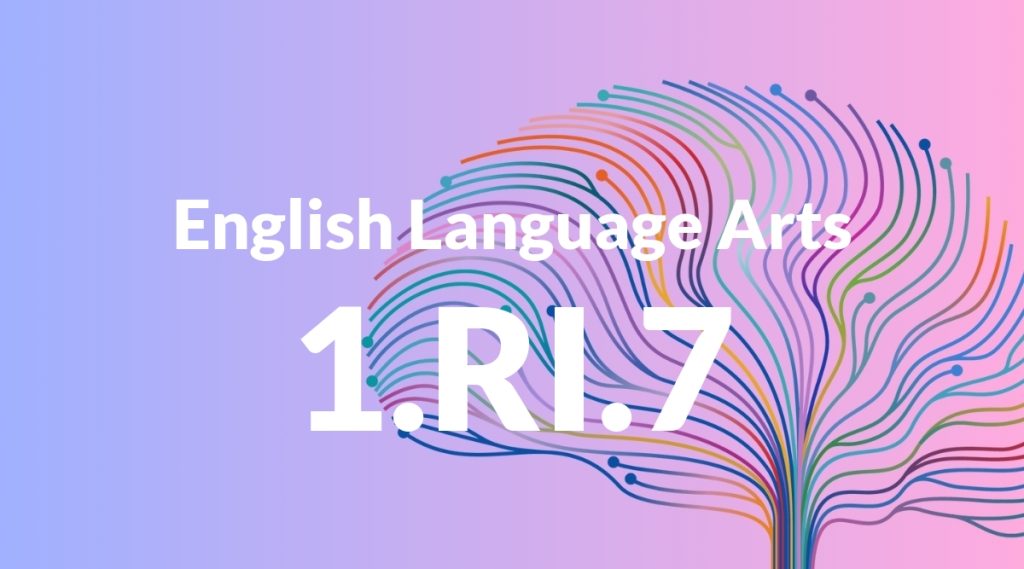Standard: 1.RI.7 – Use the illustrations and details in a text to describe its key ideas.
Grade level: Grade 1
Subject: English Language Arts
Domain: Reading: Informational Text
Teacher Overview
This standard focuses on helping students use illustrations and textual details to understand and describe key ideas. It is crucial as it builds foundational skills for reading comprehension and critical thinking, which are essential for academic success. Students should know basic story elements, be familiar with picture books, and understand simple sentences. They should also be able to identify main ideas when listening to spoken language.
Students will develop the ability to analyze more complex texts, make inferences from illustrations, and connect details from multiple sources, which are essential skills for advanced reading comprehension.
Common Misconception 1
Some students may think that illustrations are just for decoration and do not contribute to understanding the text. This misconception can hinder their ability to fully grasp the content of informational texts.
Intervention 1
Use interactive read-alouds where students describe what they see in the illustrations and connect it to the text. Ask guiding questions to help them understand the role of pictures in conveying information.
Common Misconception 2
Students might assume that if they understand the pictures, they do not need to pay attention to the details in the text. This can lead to incomplete understanding and missed information.
Intervention 2
Conduct activities where students match text details to illustrations. Emphasize how both text and pictures work together to provide a complete understanding of the content.
Prerequisite Knowledge
Students should be familiar with basic story elements and have experience with picture books. They should also understand simple sentence structures and be able to identify main ideas in spoken language.
Subsequent Knowledge
After mastering this standard, students will be able to analyze more complex texts, make inferences from illustrations, and connect details from multiple sources to understand broader concepts.
Instructional Activities
- Picture Walk: Have students predict the story by looking at the illustrations before reading.
- Text and Image Matching: Provide text excerpts and illustrations for students to match.
- Illustration Discussion: Discuss the role of illustrations in different types of books.
- Detail Hunt: Have students find and discuss details in both the text and illustrations.
- Create Your Own: Let students draw illustrations for a given text and explain their drawings.




